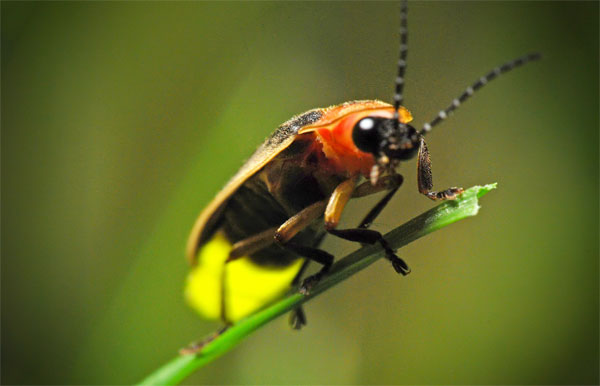Explain the ability to glow in the night of fireflies
By new imaging techniques, scientists look deeply at the bioluminescence mechanism of fireflies, which often flash light during the night to communicate or warn of the risk of attack.
Scientists have long known that fireflies glow when luciferin in the body is broken and this reaction requires oxygen. However, scientists still do not understand how they provide oxygen to luminescent cells.

Fireflies are capable of glowing in the night.(Photo: firefly.org)
The glowing firefly division is called a "lantern" , located in the insect's abdomen. "Lanterns" are like a series of interconnecting tubes connected with smaller tubes, similar to the branches growing into countless branches. This tube supplies oxygen to cells in the "lantern ", which contains the enzyme luciferase and can emit light.
Science World Report leads the discovery in Physical Review Letters, which scientists use new imaging techniques (contrasting tomography and X-ray microscopy), exploring the entire structure of " lantern ", thereby assessing the quantitative distribution of oxygen.
The resulting image shows that fireflies deflect the oxygen used for other cell functions, drawing oxygen into the reaction to break down luciferin. During this time, intracellular oxygen consumption decreased, energy production slowed.
This finding not only reveals many things about fireflies, but also shows how techniques are changing the way people see the world. It is likely that new imaging techniques will be used for other future studies.
- Fireflies glow to do?
- Learn the glowing mechanism of fireflies
- A close-up of the fantasy of self-glowing creatures
- Clouds glow in the night
- Fireflies are on the decline
- The unique gift of fireflies
- Luminescence in the evening
- Cats glow in the night
- Will the eyes see through the night?
- Discover the mystery of 'invisible' sharks
- Beautiful fireflies forest enchanting in Japan
- The 'biodegradable lamp' is powered by glowing bacteria
 Why do potatoes have eyes?
Why do potatoes have eyes? 'Tragedy' the world's largest carnivorous life: Death becomes ... public toilet
'Tragedy' the world's largest carnivorous life: Death becomes ... public toilet Tomatoes were once considered 'poisonous' for 200 years
Tomatoes were once considered 'poisonous' for 200 years Detecting microscopic parasites on human face
Detecting microscopic parasites on human face